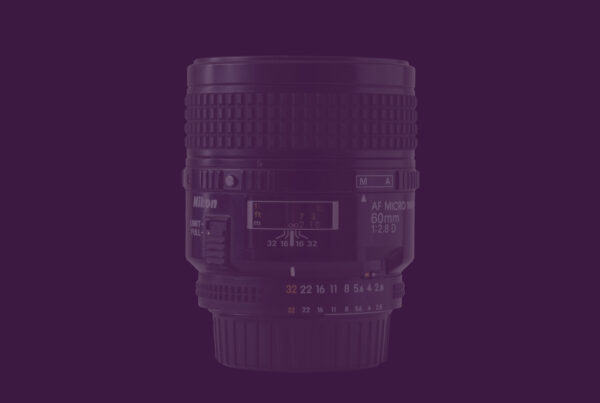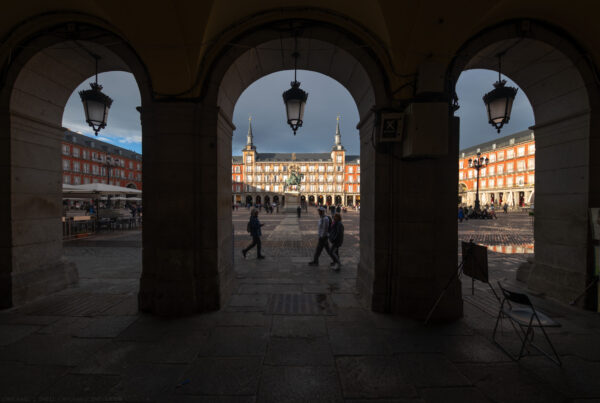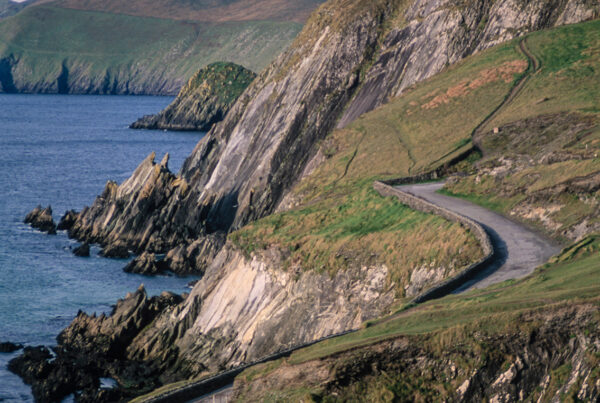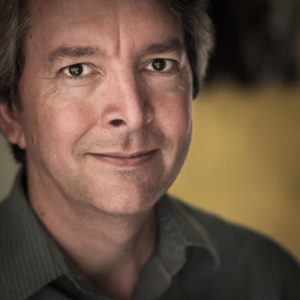In planning for an upcoming photo trip, I found myself weighing whether or not to pack the long lens: the Tamron 150-600mm. Right now, I can only think of a couple of locations where I might wish I had something more telephoto than my 70-200, but is that enough to rationalize carrying something of that size and weight for the whole trip? After all, my current DSLR (the Nikon D850) has a 48mp sensor so couldn’t I just crop an image shot at 200mm and still have plenty of resolution?
And down the rabbit hole I go…
To help myself reason this out, I found in my Lightroom catalog a scene I’d recently shot at 200mm and at 550mm. I couldn’t find a pair where I had shot the second at the full 600mm reach, but this seemed close enough for my purposes.

So we’ll begin here. Two photos of Long’s Peak in the Colorado Rockies taken (on different mornings) from the porch of a cabin south of Estes Park. The wide scene was shot at 200mm on my D850 and the inset was shot at 550mm. I reduced the 550mm shot so that it matched the scale of the wider shot so that I could see how much I would have to crop a 200mm image to get the same angle of view as a 550mm image.
It would be quite a crop to get a 550mm image out of a 200mm frame. You’d be throwing a lot of data away, right? But how much data would you actually be left with?
This is where the rabbit hole turned and traveled deeper into what is probably meaningless to anyone but me, but if you feel like hanging in there with me… here we go…
I started thinking about all of my previous DSLRs and how much smaller their sensors had been. Would the image size of one of those old bodies be an equivalent to the cropped “550mm” image?
Let’s take a look back at all of my digital SLRs. I won’t judge of you decide to skip to the end of this post, or just skip to the next post entirely. For those with nothing better to do — here goes:
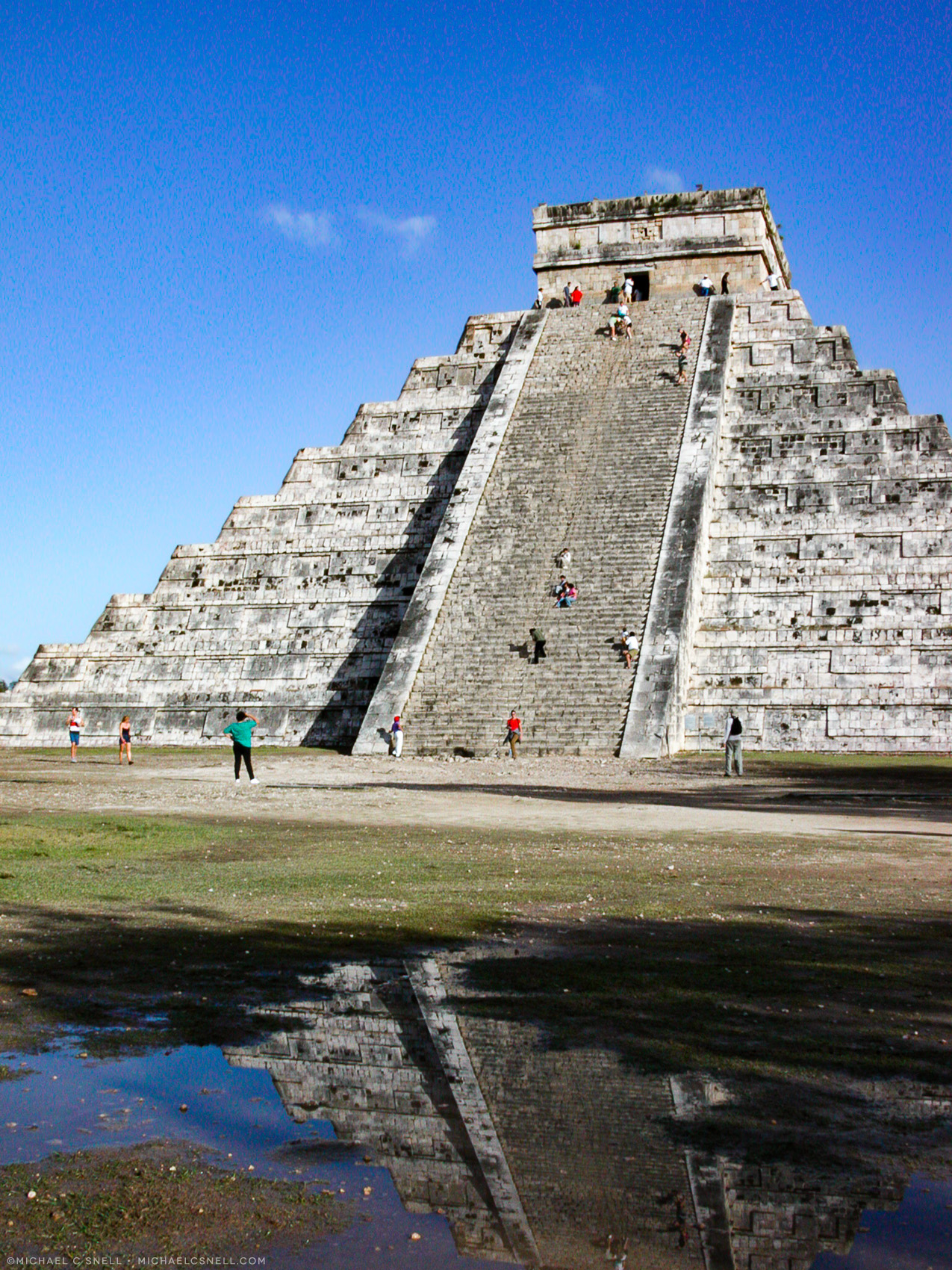
Nikon 990
Note: I’m linking the camera names like the one above, to Nikon’s information pages in case you want more data on any of these bodies.
I’m cheating on this one a bit. It’s not a DSLR, but an early swivel-body digital with a built in zoom lens. I had owned an Apple Quicktake before this, but the 990 was the first digital body I traveled with internationally so I’ll include it here. This little guy went to the Yucatan peninsula of Mexico with me 20 years ago in 2002. It had 3.2mp with the long side of the image being just over 2000 pixels.
Nikon D100
The D100 was the first DSLR that I used on an international trip. My previous international trip to Ireland had been my last with film. I still shot both side-by-side on domestic assignments for a long time, because many publishers were still a bit uncomfortable with digital. How times have changed! I think that for a 6.1mp camera its images hold up pretty well. This is the island of Mykonos in Greece in 2003.
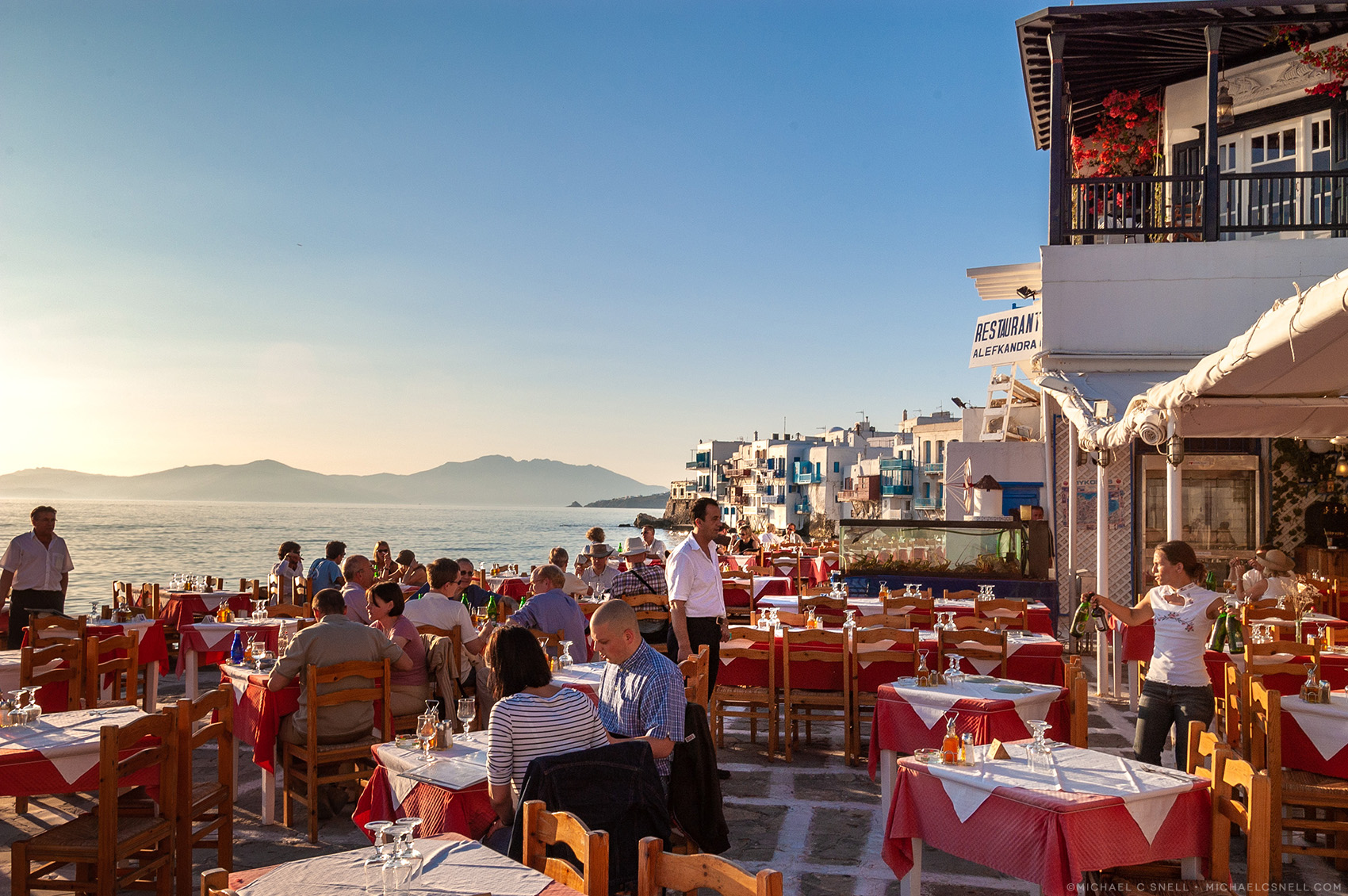
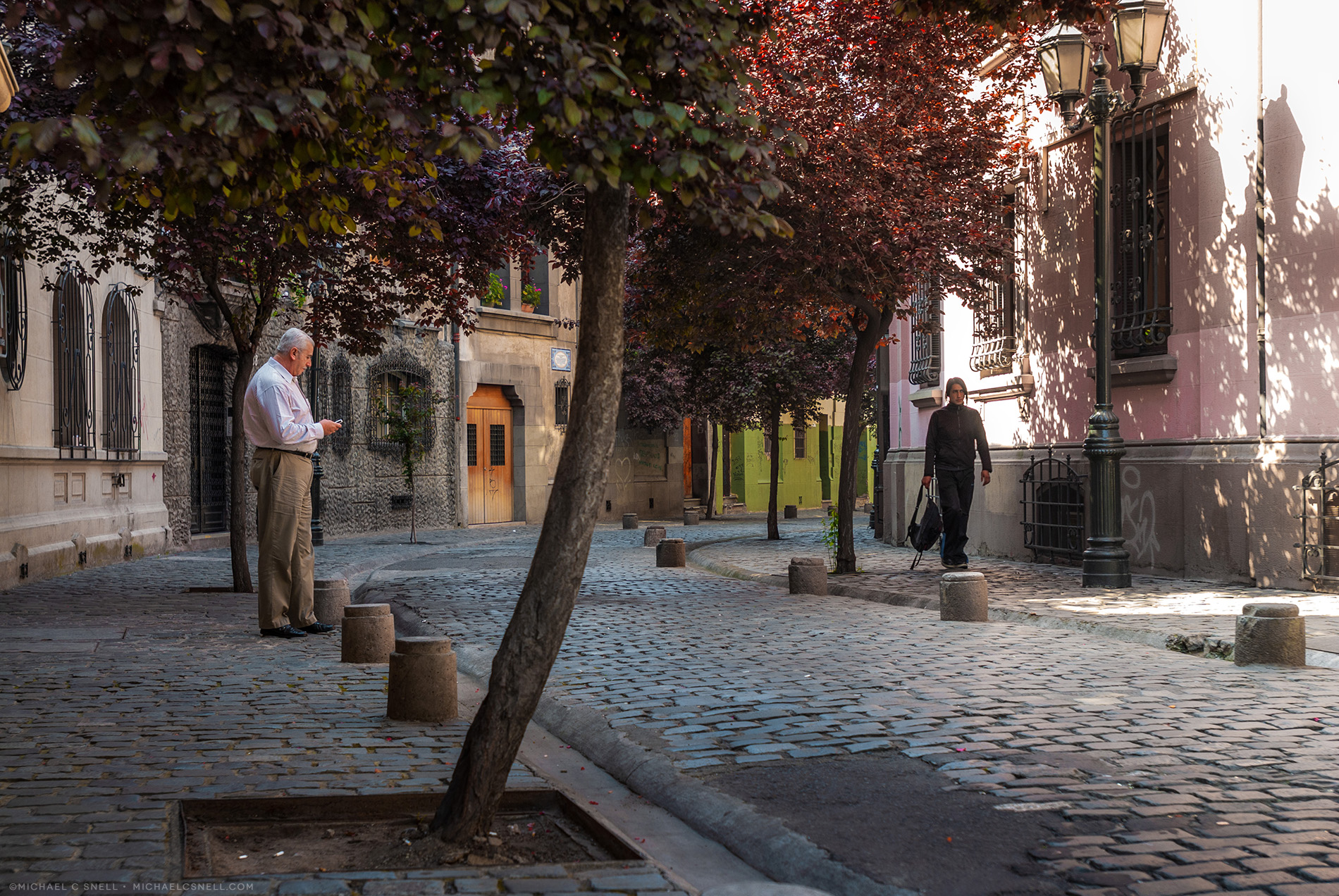
Nikon D200
The D200 (10.2mp) accompanied me first to Chile in 2006. If I’m remembering correctly, this might have been the first digital that I could use for some of my stock agencies. It seems like there was a limit at the time of 10mp for them to take the images seriously. Prior to this, I was submitting scans of transparencies.
Nikon D300
I added a D300 (12.3mp) to my kit for a trip to China in 2008. I was still using the D200 as well. It was about this time that I began carrying two bodies most of the time – one with a wide and one with a telephoto lens – partly so that I wasn’t having to change lenses in the field so much. Sensor dust was a bigger worry in those days.
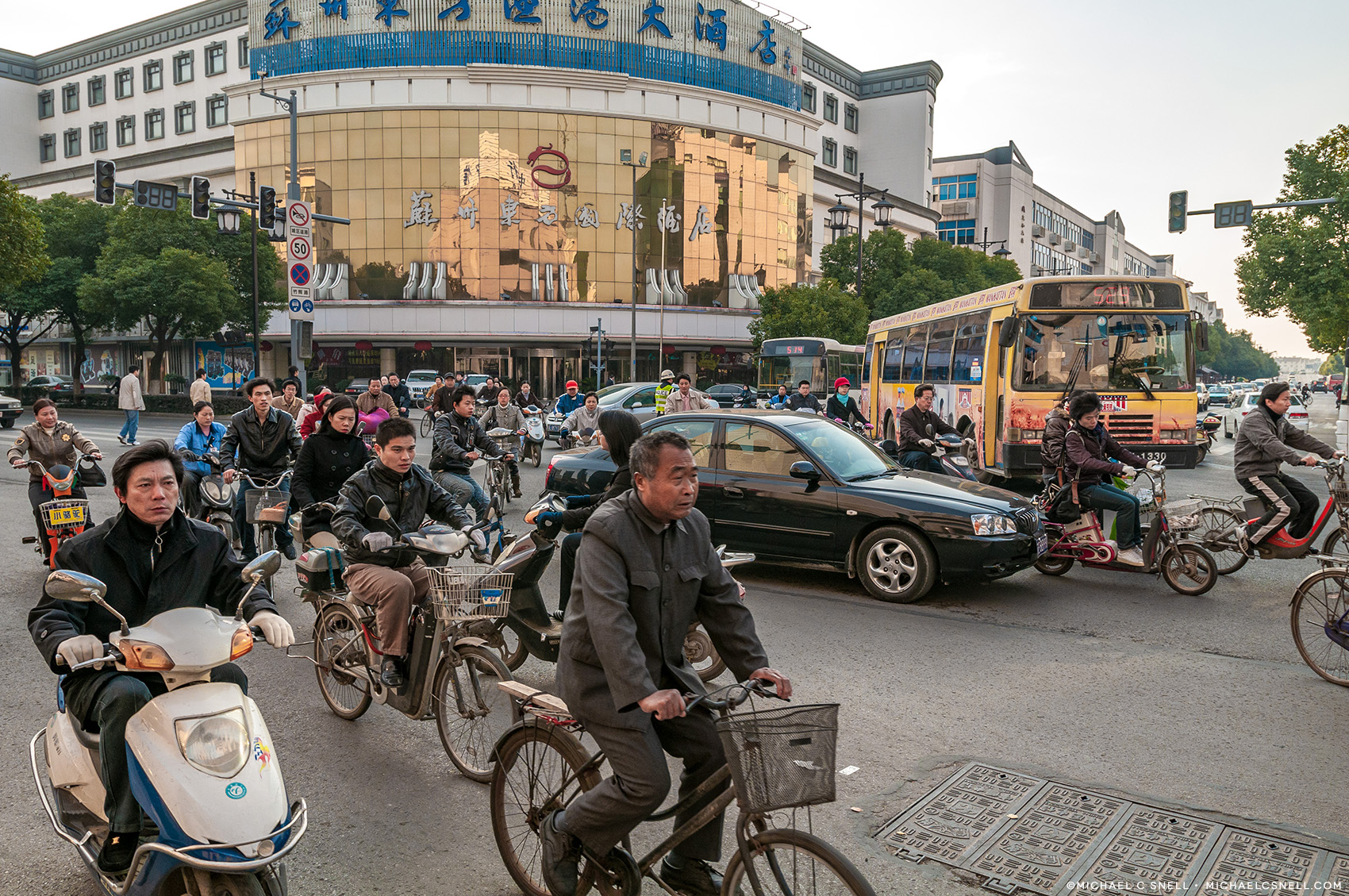

Nikon D7000
The one Nikon DSLR I owned that I never really warmed up to was the D7000. At 16.2mp it wasn’t a huge jump in image size, but it did offer video. I think I traded the D300 for this camera and soon regretted it when the D300s came out that also offered video, but in a form more like my beloved D300. Ah, well. The D7000 did get me through a lot of shoots, including on this — its first international trip with me — to Fiji in 2011.
Nikon D700
The D700 was my first full-frame DSLR and I loved it. I had stubbornly held on to my lenses from when I shot with a film SLR (the Nikon F100 was my last) and it was so good to have my 17-35mm zoom back to its true wide-angle goodness. All of my DSLRs up until this had a sensor that was smaller than a 35mm film frame so it more-or-less cropped a 17mm image into a 25mm field of view. So, while your telephotos got “longer” (a 100 was more like a 150), wide-angles really suffered. It was so good to have my wide 17 back. And the D700 was built like a tank. It’s shutter sounded a bit like you dropped a trash can lid on the street, but it was such a solid piece of kit. At just over 12mp this was actually a step down in file size, but being full frame and a physically larger sensor, I found the images to be much better than those from the 16mp D7000.


Nikon D810
I skipped over the D800 and went for the D810 when it came out. Back in China in 2018, this was now my main body and at 36mp it was so much larger than my trusty 12mp D700 that I tended to shot only with the 810 and just carried the 700 or 7000 as back-up bodies.
Nikon D850
The 45.7mp Nikon D850 became my camera of choice in 2019. It accompanied me to Spain (Toledo, Spain, shown here) and Japan just before the pandemic struck and the world closed. Now there is talk that this might be the last of the prosumer Nikon DSLR bodies, but it’s a darned good one. I honestly can’t ask for much more than this camera delivers. The day may come that I go mirrorless, but we’ll see what happens. If I did so today, I’d possible go up to the 100mp Fujifilm GFX100. I think that might be what it would take for me to see any improvement in quality and, for my style of shooting, none of the other advantages of mirrorless are advantages to me. Yet. Who knows what comes next, but I’m perfectly happy with the D850 for now.

So, if you’ve hung with me this long, where does this leave us? I stacked the images from each of these cameras on top of the one from the D850, which has the highest megapixel count, and created outlines showing the approximate images sizes that came out of each of those cameras.
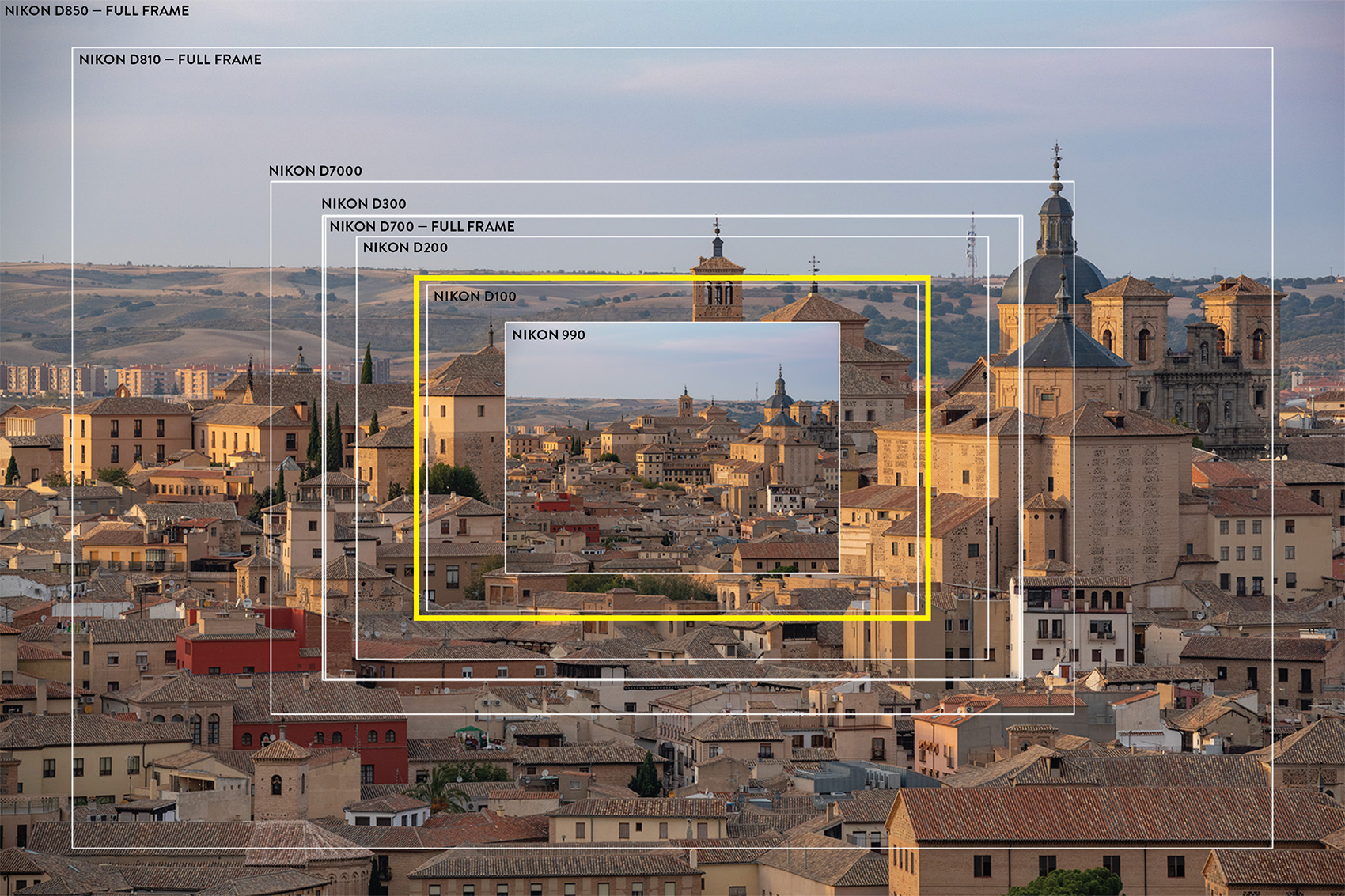
I placed a reduced version of the D850 into the smallest 900 image frame, just for a little additional size reference.
So it’s fairly plain to see how much larger in pixel dimension images from each camera became. Next I overlayed the approximate crop I had determined would be needed to take a 200mm image and crop to to a 550mm field of view, and that’s the yellow rectangle. If my math is correct, that means I could shoot with the 200mm on the D850, crop it to the same field of view as that of a 550mm lens and still have an image larger than those I shot un-cropped on my old D100. Truthfully, I think the cropped image would be superior to D100 image due to sensor advances, software improvements, the larger physical size of a full-frame sensor, and the fact that I can shoot at a lower base ISO on the D850 than on the D100 which should give less noise.
It was an interesting exercise — for me, at least. I doubt this will have much usefulness to others, but it has been an interesting way for me to chart the advances of the last couple of decades and to maybe help convince myself to leave the 150-600 at home this time. It’s actually quite compact and not that heavy for a 600mm lens, but it is a bit larger than my 70-200 and there are many fewer times that it is needed on the kind of trip that I’ll be taking next.
